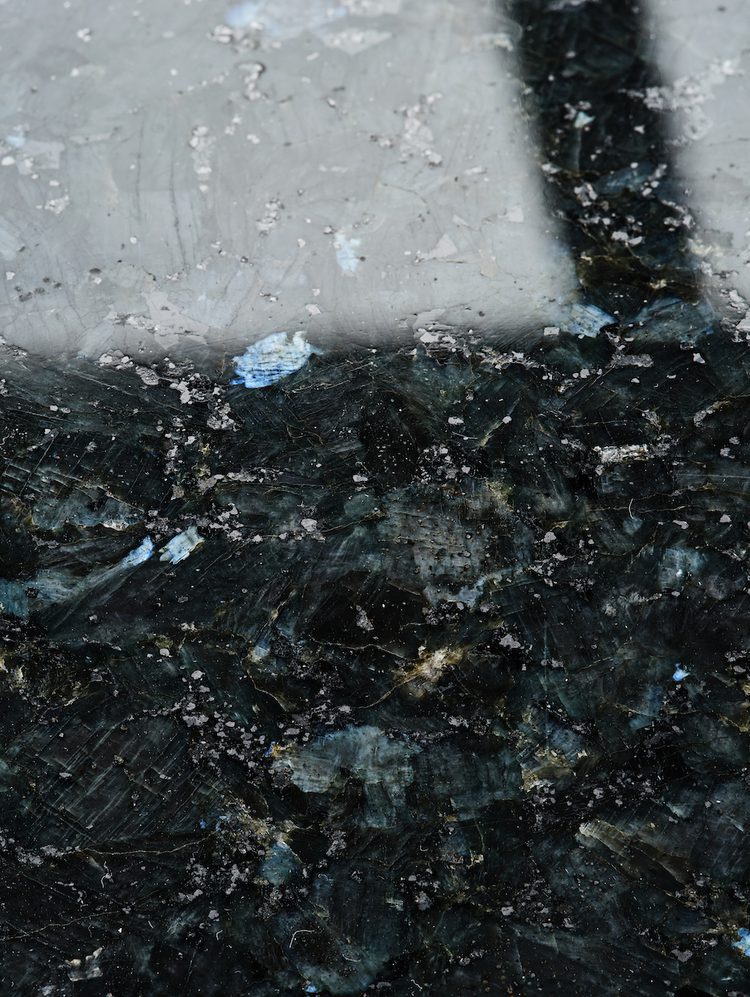
Lundhs Emerald®, polished
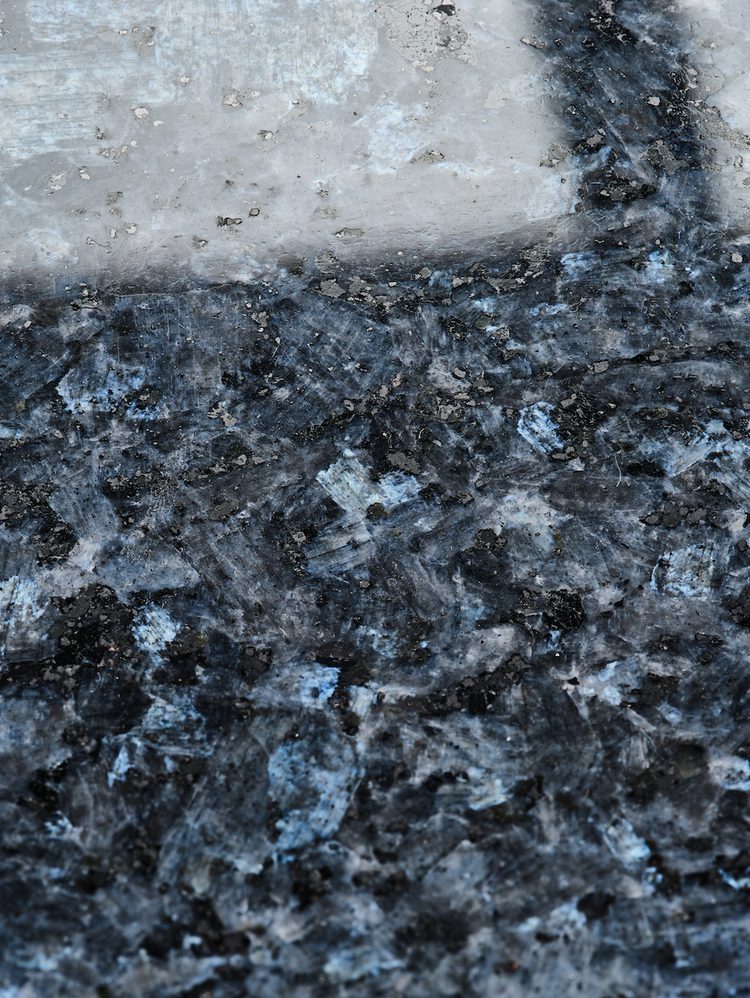
Lundhs Blue®, polished
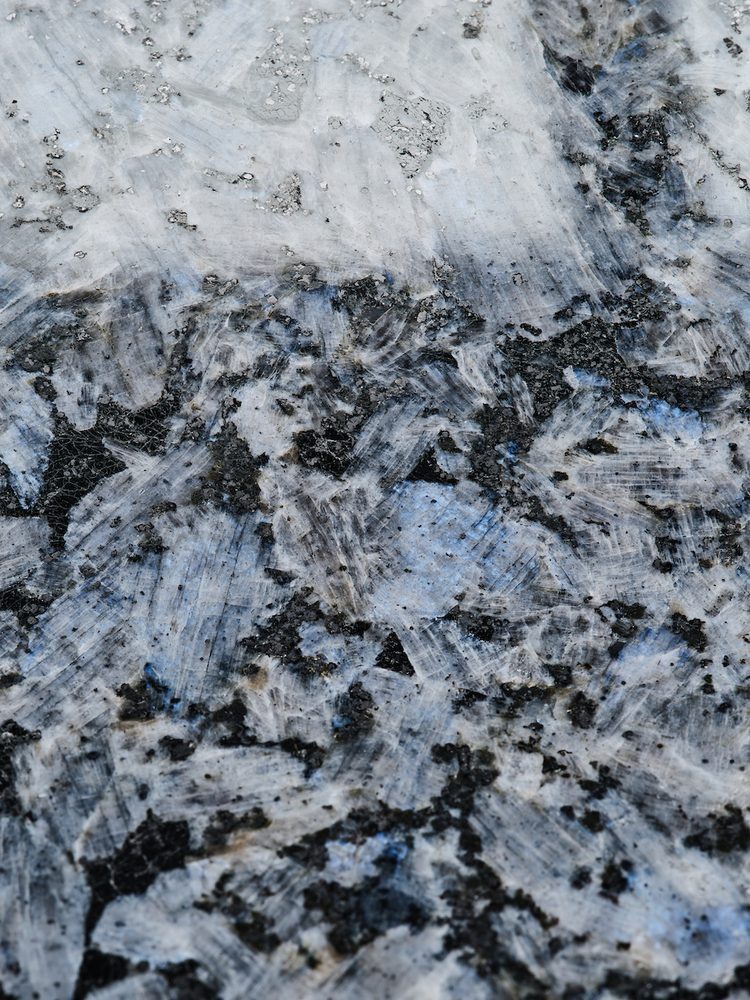
Lundhs Royal®, polished
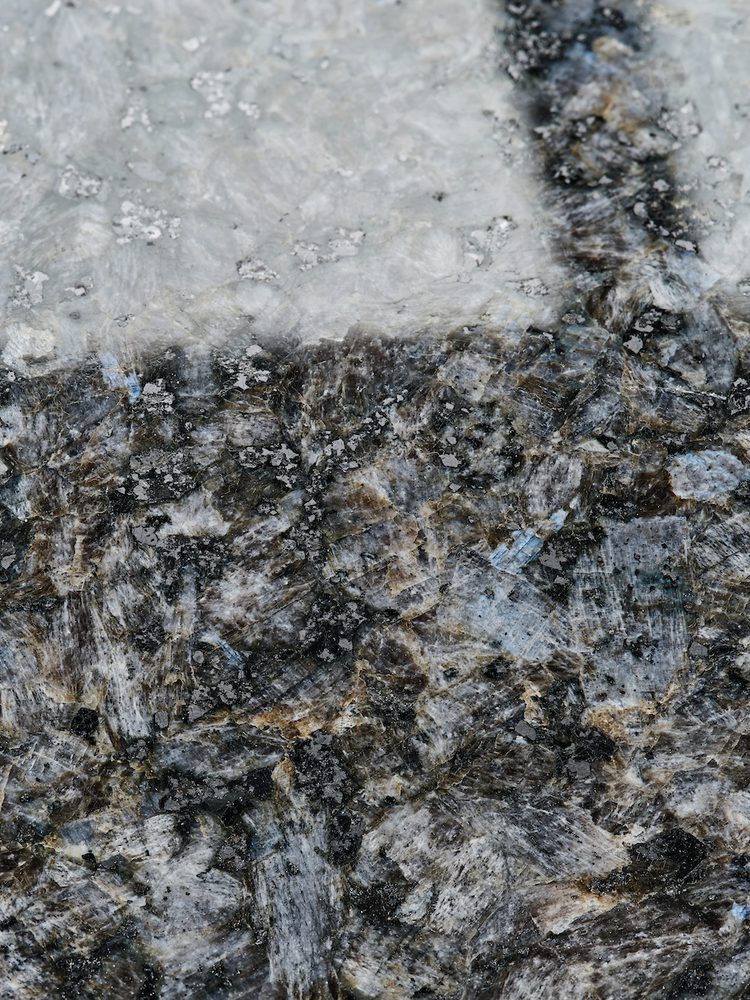
Lundhs Ocean®, polished
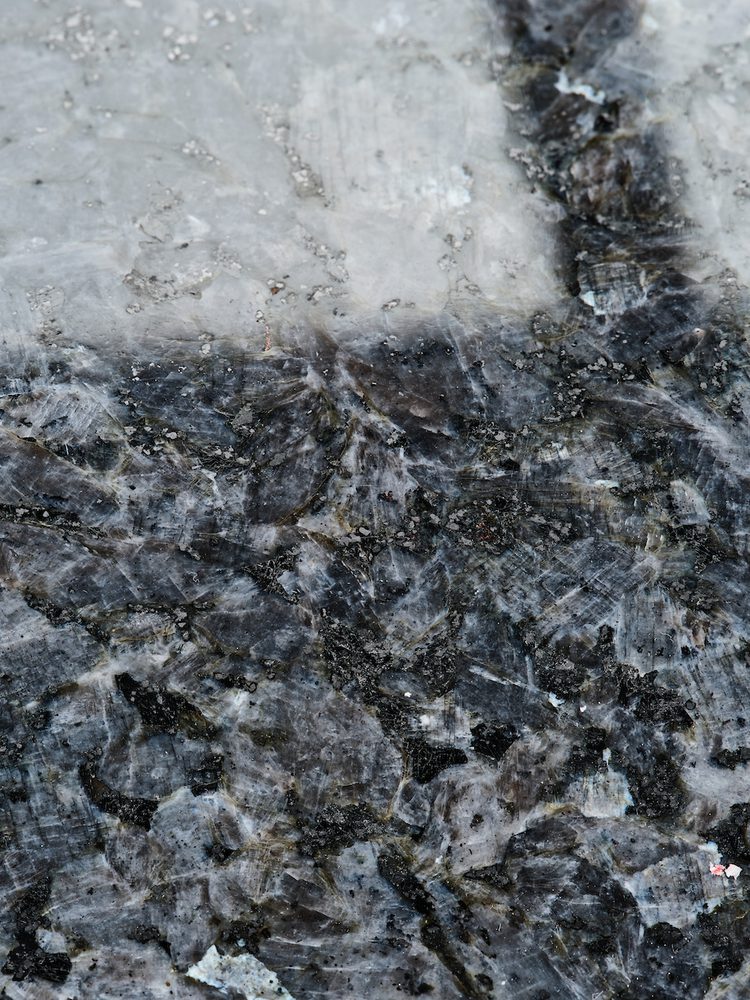
Lundhs Marina®, polished
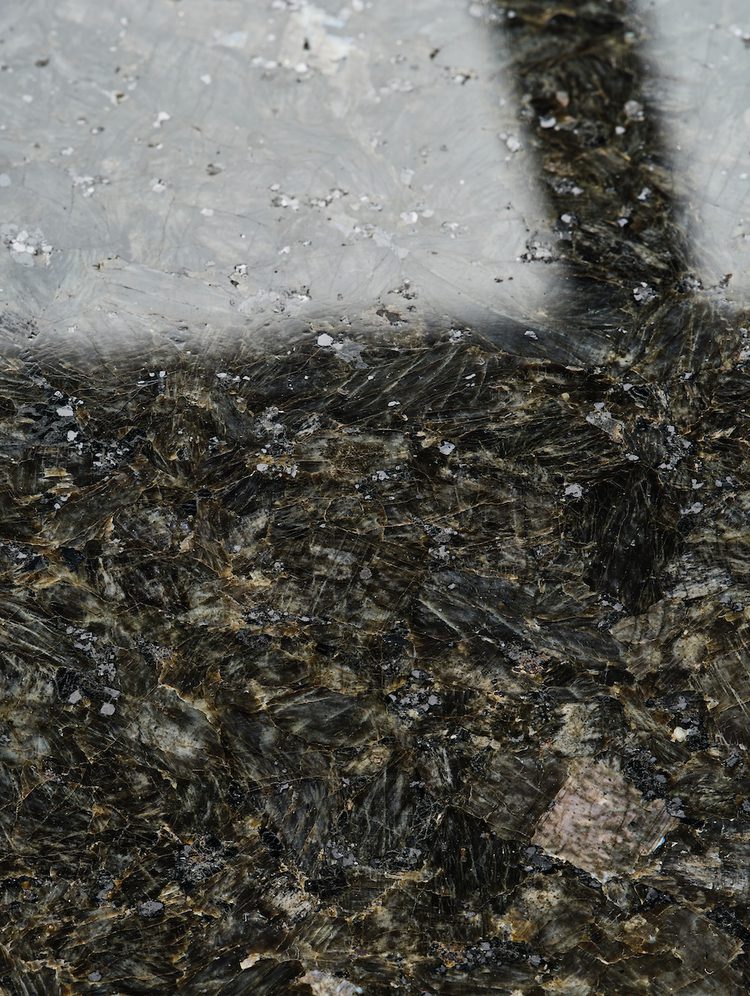
Lundhs Grey™, polished

Larvikite is an igneous natural stone renowned for its distinctive metallic iridescence, formed over hundreds of millions of years.

Lundhs Emerald®, polished

Lundhs Blue®, polished

Lundhs Royal®, polished

Lundhs Ocean®, polished

Lundhs Marina®, polished

Lundhs Grey™, polished
To understand why Larvikite displays its characteristic play of colors and unique properties, we must take a closer look at its formation. This text provides a thorough overview of Larvikite’s geological origin, its distinctive mineral structure, and the history behind its significance as Norway’s national gemstone and a highly valued natural stone.
Larvikite is an exclusive natural stone, named after Larvik in Vestfold and Telemark, where significant geological deposits are found. Although similar stones have been described elsewhere in the world, only the Larvikite from southern Vestfold is extracted and used as natural stone. This stone is internationally renowned for its unique play of colors in blue, silver, and gray — an optical phenomenon that makes its surface shimmer under different lighting conditions. This color play, known as iridescence, is caused by microscopic lamellae of alkali feldspar within the stone and the way light is refracted and reflected in the crystals’ microstructure.
Larvikite was formed in the Late Permian period (approximately 298–251 million years ago), deep beneath the earth’s surface, when molten magma slowly solidified, allowing crystals time to grow. Geologically, Larvikite belongs to the igneous stone group monzonite, but the Norwegian variant is truly unique. What makes Larvikite special are the large, rectangular alkali feldspar crystals, known as perthitic crystals, which give the stone its characteristic metallic color play. In addition, Larvikite is very dense, durable, and resistant to chemicals, weather, and wear, making it ideal for both indoor and outdoor use.
Larvikite is found only within a limited area of about 150 km², and the entire world’s production comes from this region in Norway. This makes Larvikite one of the most exclusive natural stones on the market.
In 2008, Larvikite was designated as Norway’s national gemstone, a tribute to its geology, craftsmanship, and natural heritage. The stone is a clear representation of Norwegian nature, history, and quality.

Overview of Larvikite’s shades and optical effects, reflecting variations between areas in Larvik.
Source: International Union of Geological Sciences (IUGS), Geoheritage Stone – “Larvikite” (2023).
A Piece of Cultural History
Larvikite has been in use for over 3,000 years. Already during the Bronze Age, it was used for rock carvings and burial monuments, and in the Middle Ages, Larvikite blocks can be found in both Norwegian and Danish stone churches. There is also documented evidence of Larvikite being used in fortified settlements and stone constructions during the Iron Age.
However, it was not until the late 19th century that Larvikite was widely used as a natural stone on an industrial scale. The first quarry was opened by the sea west of Stavern in 1884, and since then, Larvikite has been an important export commodity for Norway.
Today, around 200,000 tons of Larvikite are exported annually, and the stone is used in prestigious projects worldwide — from public buildings and facades to kitchen countertops and bathrooms in private homes.
Who Discovered Larvikite?
Geologically, Larvikite has always been here — it was simply waiting to be discovered. The question of who first “discovered” Larvikite, however, has a rather unique history. In 1791, the Danish-Norwegian geologist Jens Esmark sent a letter to the authorities in Copenhagen describing a beautiful, polishable stone he had found near Fredriksvern (today’s Stavern). He believed it “could be useful for the country,” and he was right. He was awarded a royal prize for the discovery and is today regarded as the first to document Larvikite’s potential as a natural stone.
Esmark later described Larvikite in a scientific article, classifying it within the syenite rock category — a description still used today. The stone was initially called “labradorite” due to its resemblance to a rock from Labrador, Canada, but the unique play of colors and composition of the Norwegian variety clearly set Larvikite apart.
It is also worth noting that Larvikite’s distribution and properties were later thoroughly mapped by internationally recognized geologists, including Leopold von Buch and Waldemar Brøgger, laying the foundation for both commercial exploitation and academic interest that has lasted for over 200 years.

A block of Larvikite is being prepared for further splitting. This is done by horizontal wedging. The photo was taken before 1906.

An employee proudly displays a block of Larvikite in the quarry.
Larvikite from Lundhs
Lundhs owns and operates the largest and oldest Larvikite quarries in Norway, and is the global leader in the extraction and processing of this stone. We offer 100% natural stone, sourced directly from the Norwegian bedrock, with a focus on quality, sustainability, and tradition. Our entire production process respects both the environment and local communities, from quarry extraction to the finished product.
Our Larvikite, marketed under the brand Lundhs Real Stone®, is used in everything from modern architecture and design projects to timeless kitchens and bathrooms. Each stone slab is unique, yet all share the natural beauty, durability, and history they carry.
By choosing Larvikite from Lundhs, you acquire an exclusive natural material with a history spanning millions of years — a material that also stands the test of time for generations to come.

After several hundred years of quarrying traditions, our employees remain at the heart of our operations, proud of their craftsmanship and the heritage they continue to uphold at Lundhs.
This text is partly based on the article “Who Discovered Larvikite?” by Geir Hestmark, published in GEO 14 (7), 2011, by GeoPublishing. The article provides a scholarly and historical insight into the origin and significance of Larvikite, with particular emphasis on Jens Esmark’s role in the early documentation of the stone.
Other sources:
Brøgger, W. C. (1890). Die Mineralien der Syenitpegmatitgänge der Südnorwegischen Augit- und Nephelinsyenite.Zeitschrift für Krystallographie und Mineralogie, 16: I–XVI, 1–235 (General part), 1–661 (Special part) + 28 tables.
Børresen, A.-K. & Heldal, T. (Carstens, H., ed.) (2009). Larvikite – Unique, Beautiful, Exclusive. Norway’s National Stone. Trondheim: GeoPublishing and the Norwegian Geological Society.
Esmark, J. (1794). Nachricht vom labradorischen Feldspath und krystallisirten Molybden in Norwegen. Journal der Physik, 8: 288–290.
International Union of Geological Sciences (IUGS), Geoheritage Stone – “Larvikite” (2023). URL: https://iugs-geoheritage.org/wp-content/uploads/2023/11/larvikite1_web.jpg
Larsen, A. O. (ed.) (2010). The Langesundsfjord. History, Geology, Pegmatites, Minerals. Salzhemmendorf: Bode Verlag GmbH.
Noe-Nygaard, A. (1992). Larvikites in Quarrystone Churches. Copenhagen: Geological Survey of Denmark, Ministry of Environment.
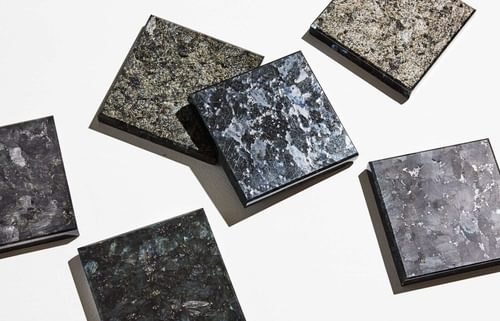

Welcome to Lundhs.
Our site is also available
in Norwegian